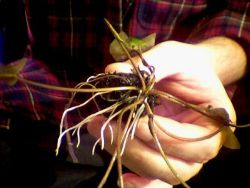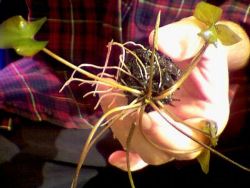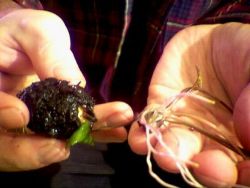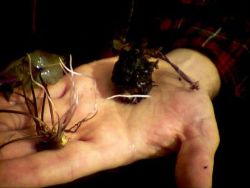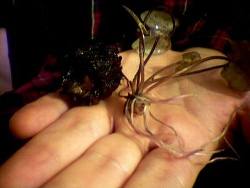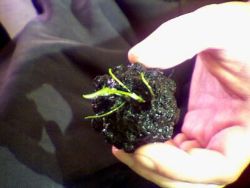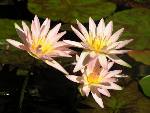 |
Propagation Click images to enlarge |
|
Here is a tutorial on how to take starts from tropical waterlily tubers.
Tropical waterlilies can be propagated by many means and this one method is the most common amongst tropical waterlily growers.
New tropical waterlilies will grow and bloom all year long showing wonderful displays of color above the surface of the water but as the days progress something remarkable is happening under the soil. A tropical waterlily will produce a tuber that the plant uses to sustain itself in times of drought allowing the plant a chance at survival. In times of drought in the waterlilies natural habitat what happens is the pads will die off and the tuber will remain below the soil and becomes quite nut-like, protecting the tuber through the dry season. Once the rains return and the tuber becomes moist again it will send up new growth from the terminal crown and a new plant will be born.
Now, as tropical waterlily hobbyists, we can duplicate this natural process and utilize the tuber to produce additional waterlilies from the same tuber. Once new growth begins to show itself on the tuber and there are visible roots, the new plantlet can be removed from the tuber to form a new plant which in time will also form its own tuber.
One final note on propagating tropical lilies by this method. Sooner or later the propagating tuber will become exhausted and stop producing new starts. If utilized for too long the tuber would surely die. I recommend figuring that a good number of starts to expect from a tuber in one season is from 3 to 5. After that you should consider that your tuber is tired and needs to get some vitality back. By leaving one start on the tuber, potting it up and leaving it to grow on for the rest of the season, the plantlet will feed the mother propagating tuber and nurse it back to health as well as form an additional tuber on the plantlet. Given a good season to be nursed back to health, the propagating tuber can be removed and the process started over again for additional plants.
I would urge everyone to try this method of propagating so you can share your lilies with others and give yourself a chance to trade and collect other exciting specimens you do not have in your collection.
